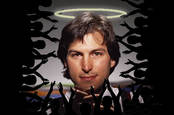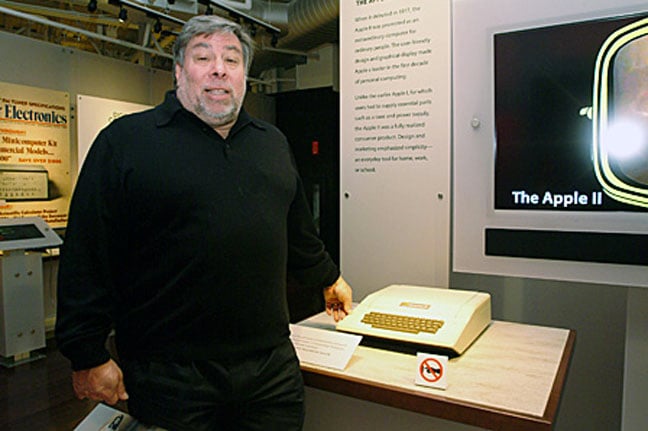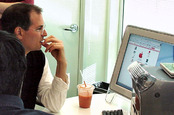This article is more than 1 year old
Steve Wozniak at 70: Here's to the bloke behind Apple who wasn't a complete... turtleneck
The Yin to Steve Jobs' Yang celebrates another orbit around the Sun
Steve Wozniak, Apple co-founder and star engineer of the personal computer revolution, turns 70 today. How do you sum up such a storied career, which continues to touch facets of our daily lives? We should start at the beginning.
Wozniak's early work was the result of an inquisitive hacker mindset. He said he bailed out of his computer science degree at the University of Colorado Boulder after running up an eye-watering bill, $50,000 in today's money, on the school's computer system doing programming work – though college lore is that he was expelled in 1969 for sending prank messages.
Either way, he went back to California, and eventually enrolled at UC Berkeley in 1971. That year, he made a new friend, Steve Jobs, who was still in high school, according to Jobs' biographer Walter Isaacson. Jobs and Woz also attended the legendary Homebrew Computer Club from its inception in 1975, the same year Woz was working at Hewlett-Packard having dropped out of Berkeley.

On the seventh anniversary of Steve Jobs' death, we give you 7 times he served humanity and acted as an example to others
READ MOREThe pair also looked into the phone system, building devices that allowed them to place long-distance calls at the expense of the phone companies. This later turned into a business partnership, with Woz devising the gadgets and Jobs handling the sales – a recurrent pattern in their relationship.
Hackers have to grow up someday, though they never stop being hackers. In 1976, the year Jobs and Wozniak formed Apple Computer Inc, Woz made computing history by completing the design of the Apple I. Computers by this point were a fact of life. You had business machines that were the size of domestic appliances and filled whole rooms. And there were video game systems from the like of Magnavox. But they weren't exactly personal.
This was. The Apple I connected to a TV in your home, and displayed characters on the screen in real time as you typed. Woz and Jobs managed to secure an order for 50 of the machines from Paul Terrell's Byte Shop. Terrell would pay $500 per computer on delivery so long as they came fully assembled. He wasn't interested in DIY kits.
The Apple pair took risks to deliver the order. Jobs sold his van. Woz sold his prized HP-65 electronic calculator. They ordered $20,000 of components, net 30 days, and worked day and night, eventually delivering the assembled machines to the store. This early success earned Apple the attention of former Intel employee Mike Markkula, who gave the fledgling computer company its first investment, allowing it to build credibility and expand into new products, like the hugely successful Apple II.
Woz helped develop the Apple II, which became a mainstay in personal computing with a commercial run that lasted into the early 1990s. Arguably of more significance was his influence on the design of the original Macintosh, which helped popularize the graphical user interface.
"I couldn't be prouder of anything more than that in my life," Woz told The Register in 2011, looking back on the Apple I and II. "It was a big cornerstone in my life to be worried about the person at home having as good appliances as the military or the big business [who had] all the money."
Apple goes corporate, Woz doesn't
Apple became a different company in the following years, ditching its homebrew roots for something more becoming of corporate America. Yet Woz never changed. He was still very much a hacker. An engineer.
We all know the story of Steve Jobs. In Apple canon, he was the visionary, albeit one that made Woz cry when he found out Jobs had scammed him by pocketing the majority of a payment they jointly received for completing a Break Out project for Atari.
Woz was the brains and the heart of the early Apple operation. Meanwhile, Jobs' ruthless streak was infamous. He initially denied his parentage of Lisa Brennan-Jobs, although they later reconciled. And in the months preceding Apple's IPO, Jobs refused to give certain early Apple workers stock options, including the firm's 12th employee Daniel Kottke.
Woz gave Kottke – and other snubbed staffers – $10m of stock from his own portion, saying it was "the right thing" to do. Woz left Apple in 1986, disillusioned at how the firm had evolved from a maker of pioneering computers into something more gray and formal.
And while he never quite repeated his early commercial success, Woz has continued to shape the world of tech. His first post-Apple business created the world's first programmable remote. He also served on the board of directors at Danger, which created the Hiptop (also known as the Sidekick), helping to pave the way for today's Android and iOS smartphones.
He's also focused on philanthropic projects, such as storage startups Fusion-IO and Primary Data; co-founded Silicon Valley Comic Con; sponsored the Tech Museum and Children's Discovery Museums; and co-founded the Electronic Frontier Foundation.
Lately, he sued Google's YouTube after scammers on the vid-sharing site used his name and likeness in fake Bitcoin giveaways. "If a crime is being committed, you must be able to reach humans capable of stopping it," Woz told the Beeb.
Well, quite. Happy birthday, Steve (the good one). ®


